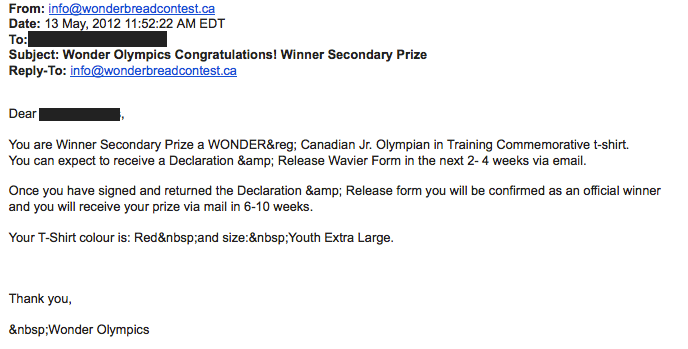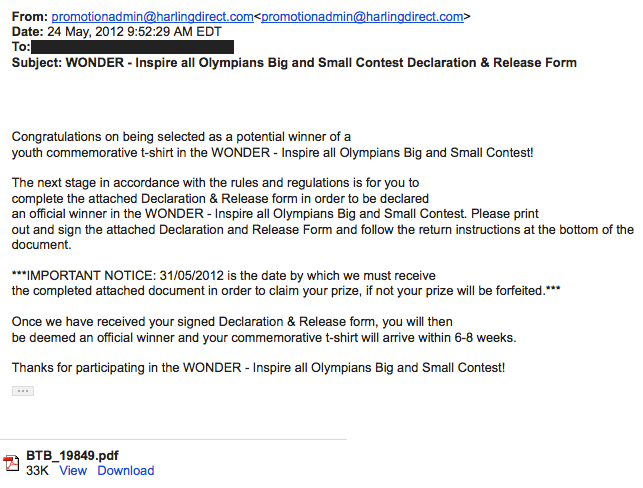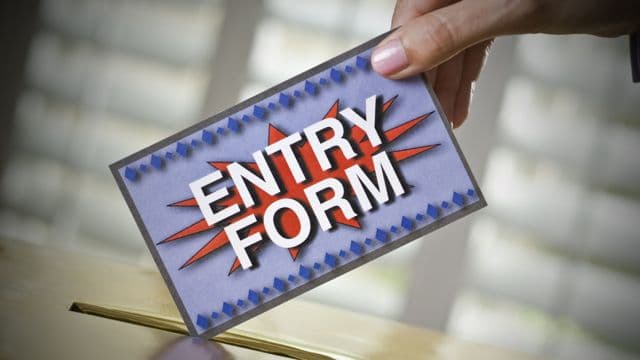A brand promotion contest can be a great way to increase brand awareness and reward brand loyalty. However, the brand marketing spend will be wasted if care isn’t taken with every aspect of the contest’s customer experience. The risks of harming your brand if some contest details fall below your brand standard are magnified by social media.
8 Brand Promotion Contest Tips
To make the most of your next brand promotion contest (and avoid throwing your brand into damage control mode), we offer the following eight tips.
- Make sure that you and your team map out each and every step of the customer experience.
- Try out and test the contest experience yourself. Do not rely simply on a customer experience map. Brand promotion success comes from minding the details. Simple and intuitive trumps fussy (even if conceptually beautiful) details.
- If your contest will be entered online, make sure testing includes making mistakes as you enter the contest. Are there hints to help you through the entry process? Or will your customer see an error message? Make sure the hints and error messages measure up to how you would like to treat your customers.
- Have the contest tried out by people not on the contest team. Do not explain how it works to them. Have them try it out cold with as little information as possible. Ask them to be brutally honest.
- If you are collecting information as part of the entry process, ask yourself what information you actually need to collect. Consider eliminating the collection of unnecessary personal information. Customers are wise to contests which are just a database building ruse.
- Ask yourself if any step may irritate, inflame or seem silly to entrants.
- Make sure you don’t run afoul any applicable laws and regulations which may govern your contest, either in your home market or elsewhere. Legal review shouldn’t be glossed over or assumed unnecessary. If you are in doubt, check with legal counsel and make sure your contest measures up.
- Use common sense. Do you really need the winners of an $18 t-shirt to sign a Waiver and Release? If there a waiver and release is necessary, don’t overreach. You will turn off the very people you are trying to win over with your contest.
Wonder Bread Canada Brand Promotion Contest
The recent Wonder Bread Canada “Inspire all Olympians Big and Small” contest is a good example of a contest missing its brand promotion mark due to avoidable customer experience mis-steps.
In April and May, 2012, Wonder Bread ran a brand promotion contest, Inspire all Olympians Big & Small, where people could enter to win a trip for four to London, England to see the 2012 Summer Olympic Games. Secondary prizes included one of 10,000 youth sized “Jr. Olympian in Training” Wonder Bread brand t-shirts to commemorate Wonder Bread’s contribution to the Canadian team.
Entering the Wonder Bread Canada brand promotion contest was done online by creating a contest profile (including the participant’s name, address, email and date of birth information) and then entering a special PIN number from Wonder Bread products packages. Once the PIN code was entered, a graphic of an online race was displayed and the contest participant learned if they won or not. Winners had to answer a skill testing math question. After that step, winners were sent email notifications to claim their prizes.
Customer Experience Lessons from the Wonder Bread Brand Promotion
Unfortunately, the Wonder Bread Canada brand promotion contest had three key shortcomings which detracted from the brand building potential of the contest. This otherwise fine (and actually sort of fun) contest got waylaid in the customer experience details.
We offer the three key shortcomings as a case study in why testing out the customer experience is so important. The contest came to our attention because a Distility team member is an actual loyal Wonder Bread customer and entered the contest during a family hotdog lunch.
1. Frustration in Contest Entry
Do not expect that your simple contest entry will be executed in the way you envision. In the Wonder Bread case, contest entry was frustrating for several reasons.
- It was hard to remove the sticker with the PIN code needed to enter the contest without tearing a hole in the bread package.
- The online entry required contest participants to provide name, address, email and birthdate before entering their pin code. It seemed like a lot of information to enter before entering the PIN code.
- The online entry appears to have been case sensitive and this wasn’t obvious to quite a number of customers. Contest participants complained on Wonder Bread’s Facebook page that their PIN codes were not being accepted by the entry site. Having made this mistake ourselves, we think the problem was that the PIN codes, which were presented on packaging in all caps, had to be entered in all caps. The error message simply set out that the PIN was invalid. A hint or polite error message about PINs being all caps would likely have avoided this customer frustration point.
2. Communication
The email sent to a contest winner did not reflect the expected Wonder Bread Canada brand standard. The email (included below) was puzzling for three main reasons:
- The email included weird coding characters which gave them a very machine generated impersonal feel.
- The email raised a requirement for a winner of a t-shirt to have to sign a Release Waiver form before getting it.
- The time lines set out seemed very long (2-4 weeks to receive a release and then 6-10 weeks to get the shirt) – especially given all the personal information collected to enter the contest. Common sense would have dictated that Wonder Bread Canada could have popped the t-shirt in the mail immediately after the winner correctly answered the skill testing question.

First email notification to secondary prize winners.
3. Frustration in Prize Claim Process
We would have ended our post with the above email, but the second email to secondary prize winners is a good example of why each step of a contest needs to be mapped out and tested. The two main issues:
- The second email downgrades contest winners to being a “potential winner”, and if the release isn’t received within seven days of the date of the email then the winner is apparently forfeiting their prize. This seems like a bit of a harsh way to treat a loyal customer.
- The Release Waiver seems pretty extensive and unnecessary before getting a t-shirt.

Second email presents winners with a complicated Release Waiver.

Release Waiver for secondary prize winners.

